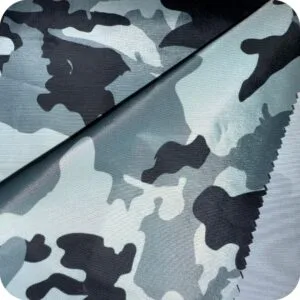
Abrasion-resistant fabrics are crucial for applications requiring durability, longevity, and performance under tough conditions. These fabrics are engineered to withstand wear and tear caused by friction, ensuring extended product life and consistent quality. In this article, we’ll explore the benefits, grading systems, and diverse applications of abrasion-resistant fabrics. Additionally, we will highlight the premium offerings of Fabrics-FTY.com and JacquardPro.com, two leading suppliers of innovative textile solutions.
1. What Are Abrasion-Resistant Fabrics?
Abrasion-resistant fabrics are textiles designed to endure mechanical wear, such as rubbing, scraping, or impact, without degrading in strength or appearance. These fabrics are widely used in industries such as outdoor gear, workwear, upholstery, and even fashion.
Types of Abrasion-Resistant Fabrics
1.Synthetic Fabrics: Nylon, polyester, and Kevlar are commonly used for their durability.
2.Blended Fabrics: A combination of synthetic and natural fibers to balance performance and comfort.
3.Coated Fabrics: Fabrics treated with polyurethane (PU), PVC, or silicone for added resistance.
4.Jacquard Weaves: Offering both durability and intricate patterns for aesthetic appeal.
Discover a variety of abrasion-resistant options at Fabrics-FTY.com.
2. Advantages of Abrasion-Resistant Fabrics
a. Enhanced Durability
Abrasion-resistant fabrics maintain their structural integrity even after repeated exposure to friction and tough conditions.
b. Cost-Effectiveness
Their longevity reduces the frequency of replacements, making them a cost-effective choice for industries and consumers alike.
c. Versatility
These fabrics are available in various weights, textures, and designs, making them suitable for diverse applications ranging from industrial use to everyday fashion.
d. Safety Features
High abrasion resistance often correlates with enhanced protective qualities, such as puncture resistance, making these fabrics ideal for safety gear.
e. Aesthetic Appeal
Abrasion-resistant fabrics can be woven using jacquard techniques, adding intricate patterns and textures without compromising durability.
Explore jacquard abrasion-resistant fabrics at JacquardPro.com.
3. Grading Systems for Abrasion Resistance
Abrasion resistance is typically evaluated through standardized tests such as the Martindale or Taber Abrasion Test. These tests determine how well a fabric withstands wear under controlled conditions.
a. Martindale Test Ratings
•Light-Duty (10,000–15,000 rubs): Suitable for delicate applications like clothing.
•Medium-Duty (15,000–40,000 rubs): Ideal for casual wear and upholstery.
•Heavy-Duty (40,000–60,000 rubs): Used in workwear, outdoor gear, and industrial settings.
•Extreme-Duty (>60,000 rubs): Designed for harsh environments and safety equipment.
b. Taber Abrasion Test Ratings
Measured in cycles, the Taber test determines how many revolutions a fabric can withstand before showing signs of wear.
•Light-Duty (1,000–5,000 cycles): Suitable for fashion items.
•Medium-Duty (5,000–10,000 cycles): Used in upholstery and casual wear.
•Heavy-Duty (>10,000 cycles): Ideal for industrial and outdoor applications.
c. Coating Durability
Fabrics with PU or silicone coatings are rated based on how well the coating withstands abrasion and environmental exposure.
d. Tear Strength
While abrasion resistance focuses on surface wear, tear strength ratings ensure the fabric’s overall durability under stress.
Fabrics-FTY.com offers high-quality abrasion-resistant fabrics tested to meet industry standards.
4. Applications of Abrasion-Resistant Fabrics
a. Outdoor Gear and Apparel
•Backpacks and Luggage: Ensures resistance to tears and scuffs during travel.
•Hiking and Camping Equipment: Used in tents, sleeping bags, and protective clothing for rugged terrains.
•Jackets and Pants: Offers protection against environmental wear and tear.
b. Industrial Workwear
•Safety Clothing: Protects workers from cuts, punctures, and abrasions in hazardous environments.
•Gloves and Aprons: Essential in industries such as metalworking and construction.
c. Upholstery and Home Textiles
•Furniture Covers: Provides longevity for sofas and chairs subjected to daily use.
•Carpet and Rugs: Enhances resistance to foot traffic and furniture weight.
d. Automotive and Transportation
•Car Seats and Interiors: Withstands constant friction from passengers and cargo.
•Truck Covers and Tarpaulins: Ensures durability against environmental exposure and mechanical wear.
e. Fashion Design
•Abrasion-resistant fabrics are increasingly used in streetwear and high-end fashion for their unique textures and long-lasting quality.
•Jacquard weaving adds patterns to create fashionable yet durable garments.
Visit JacquardPro.com for stylish and durable jacquard-woven fabrics.
f. Military and Tactical Gear
•Body Armor and Backpacks: Ensures high performance in extreme conditions.
•Boots and Gloves: Offers protection against rough surfaces and debris.
g. Sportswear and Activewear
•Cycling Shorts and Jerseys: Reduces wear caused by repetitive motion.
•Climbing Gear: Provides safety and durability in high-friction activities.
5. Innovations in Abrasion-Resistant Fabrics
a. High-Performance Blends
Blending fibers like Kevlar and nylon results in fabrics with exceptional resistance to wear and tear.
b. Advanced Coatings
Silicone and PU coatings enhance the fabric’s resistance to both abrasion and environmental factors.
c. Sustainable Options
Recycled materials are increasingly used to produce abrasion-resistant fabrics, aligning with sustainability goals.
d. Smart Textiles
Abrasion-resistant fabrics integrated with sensors can monitor wear and provide real-time data on performance.
e. Jacquard Technology
The use of jacquard weaving in abrasion-resistant fabrics combines durability with artistic designs, suitable for both industrial and fashion applications.
For innovative solutions in abrasion-resistant textiles, visit Fabrics-FTY.com and JacquardPro.com.
6. Choosing the Right Abrasion-Resistant Fabric
When selecting abrasion-resistant fabrics, consider the following factors:
1.Application Requirements: Determine whether light, medium, heavy, or extreme-duty fabrics are needed.
2.Environmental Conditions: Consider exposure to moisture, UV rays, or chemicals.
3.Comfort and Aesthetics: Opt for fabrics that balance performance with wearability and style.
4.Supplier Reliability: Choose trusted suppliers like Fabrics-FTY.com for high-quality options.
5.Testing Standards: Ensure the fabric meets industry abrasion resistance standards.
Conclusion
Abrasion-resistant fabrics are essential for products and industries demanding durability and reliability. Their ability to withstand wear and tear makes them invaluable for applications ranging from outdoor gear to high-end fashion.
Whether you’re seeking functional fabrics for industrial use or stylish jacquard textiles for fashion, Fabrics-FTY.com and JacquardPro.com provide premium options tailored to meet your needs. Explore their offerings today to find the perfect abrasion-resistant fabric for your project.
#AbrasionResistance #DurableFabrics #FunctionalTextiles #IndustrialTextiles #OutdoorGearMaterials #FabricsFTY #JacquardPro #InnovativeTextiles #SustainableMaterials #HighPerformanceFabrics


